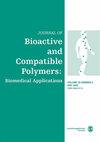Synthesis and characterization of chitosan/polyvinylpyrrolidone hydrogels for controlled amoxicillin release
IF 2.1
4区 生物学
Q3 BIOTECHNOLOGY & APPLIED MICROBIOLOGY
引用次数: 0
Abstract
Hybrid crosslinked hydrogel-based drug delivery systems can deliver therapeutically beneficial drug release effects through controlled release on a temporal and spatial scale. Due to their tuneable physicochemical properties and the ability to prevent drug degradation, these systems facilitate different physicochemical interactions that control drug release. This research aims to synthesize a potent pH-sensitive crosslinked chitosan/polyvinylpyrrolidone hydrogel using different ratios of both the polymers and varying the glutaraldehyde crosslinking agent amount by the solution casting technique for controlled amoxicillin-release properties to mitigate gastrointestinal tract bacterial infection. The effect of polymer ratios and glutaraldehyde amount is investigated by the developing porosity, gel fraction, and extent of swelling in simulated physiological fluids of pH 1.2, 6.8, and 7.4 and in vitro biodegradation at pH 7.4. Interaction between the polymers with the formation of crosslinked structures, good stability, amorphous phase nature, and honeycomb-like structures of the hydrogels is revealed by Fourier-transform infrared spectroscopy, thermogravimetric analysis, X-ray diffraction, and scanning electron microscopy. Based on these properties, a chitosan/polyvinylpyrrolidone hydrogel (ratio of 60:40) crosslinked with 600 μL glutaraldehyde in 8 g of the polymers displaying adequate swelling in acidic to basic pH and in vitro biodegradation at pH 7.4 is chosen for the in situ loading of 200 mg of the drug amoxicillin. The cumulative drug release in simulated physiological fluids and the drug release kinetics using different models show that the best-fit Korsmeyer-Peppas model suggests amoxicillin release from the matrix follows diffusion and swelling-controlled time-dependent non-Fickian transport related to hydrogel erosion. This composition displays excellent antimicrobial activity against Streptococcus pyogenes and Escherichia coli.壳聚糖/聚乙烯吡咯烷酮控制释放阿莫西林凝胶的合成与表征
杂交交联水凝胶给药系统可以通过在时间和空间尺度上的可控释放来提供治疗上有益的药物释放效果。由于其可调节的物理化学性质和防止药物降解的能力,这些系统促进了控制药物释放的不同物理化学相互作用。本研究旨在通过溶液浇铸法制备不同配比的壳聚糖/聚乙烯吡咯烷酮交联水凝胶,以控制阿莫西林的释放,减轻胃肠道细菌感染。通过pH值为1.2、6.8和7.4的模拟生理液体的孔隙度、凝胶分数和肿胀程度以及pH值为7.4的体外生物降解,研究了聚合物比例和戊二醛用量的影响。傅里叶变换红外光谱、热重分析、x射线衍射和扫描电镜等手段揭示了聚合物相互作用形成交联结构、良好的稳定性、非晶相性质和蜂窝状结构的水凝胶。在此基础上,选择壳聚糖/聚乙烯吡咯烷酮水凝胶(比例为60:40)与600 μL戊二醛交联,交联量为8 g,在酸碱pH下均具有良好的溶胀性,在pH 7.4下具有体外生物降解能力,用于原位负载200 mg药物阿莫西林。模拟生理液体中的药物累积释放和不同模型的药物释放动力学表明,最合适的Korsmeyer-Peppas模型表明,阿莫西林从基质中释放遵循与水凝胶侵蚀相关的扩散和肿胀控制的时间依赖性非菲克转运。该组合物对化脓性链球菌和大肠杆菌具有优异的抗菌活性。
本文章由计算机程序翻译,如有差异,请以英文原文为准。
求助全文
约1分钟内获得全文
求助全文
来源期刊

Journal of Bioactive and Compatible Polymers
工程技术-材料科学:生物材料
CiteScore
3.50
自引率
0.00%
发文量
27
审稿时长
2 months
期刊介绍:
The use and importance of biomedical polymers, especially in pharmacology, is growing rapidly. The Journal of Bioactive and Compatible Polymers is a fully peer-reviewed scholarly journal that provides biomedical polymer scientists and researchers with new information on important advances in this field. Examples of specific areas of interest to the journal include: polymeric drugs and drug design; polymeric functionalization and structures related to biological activity or compatibility; natural polymer modification to achieve specific biological activity or compatibility; enzyme modelling by polymers; membranes for biological use; liposome stabilization and cell modeling. This journal is a member of the Committee on Publication Ethics (COPE).
 求助内容:
求助内容: 应助结果提醒方式:
应助结果提醒方式:


